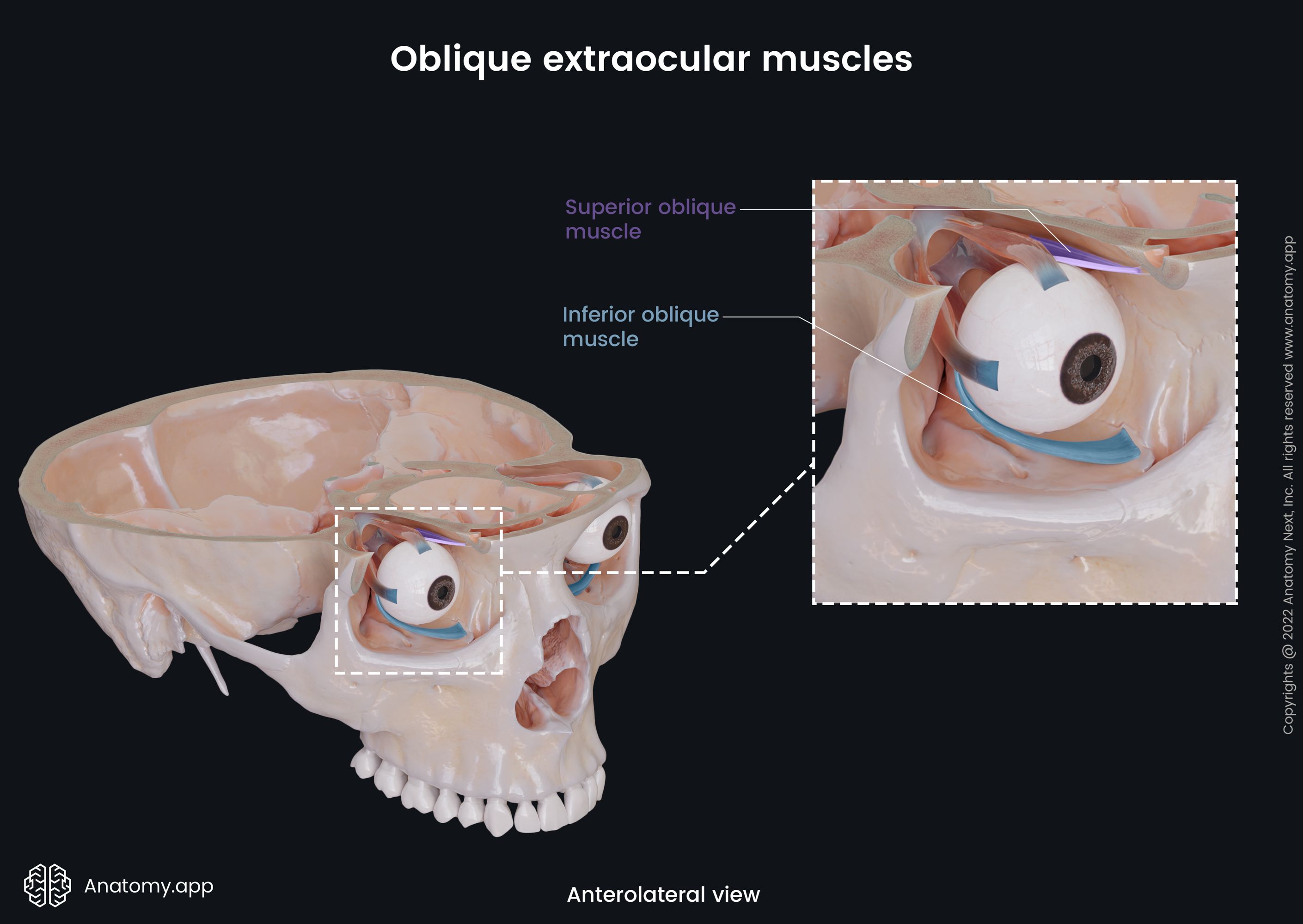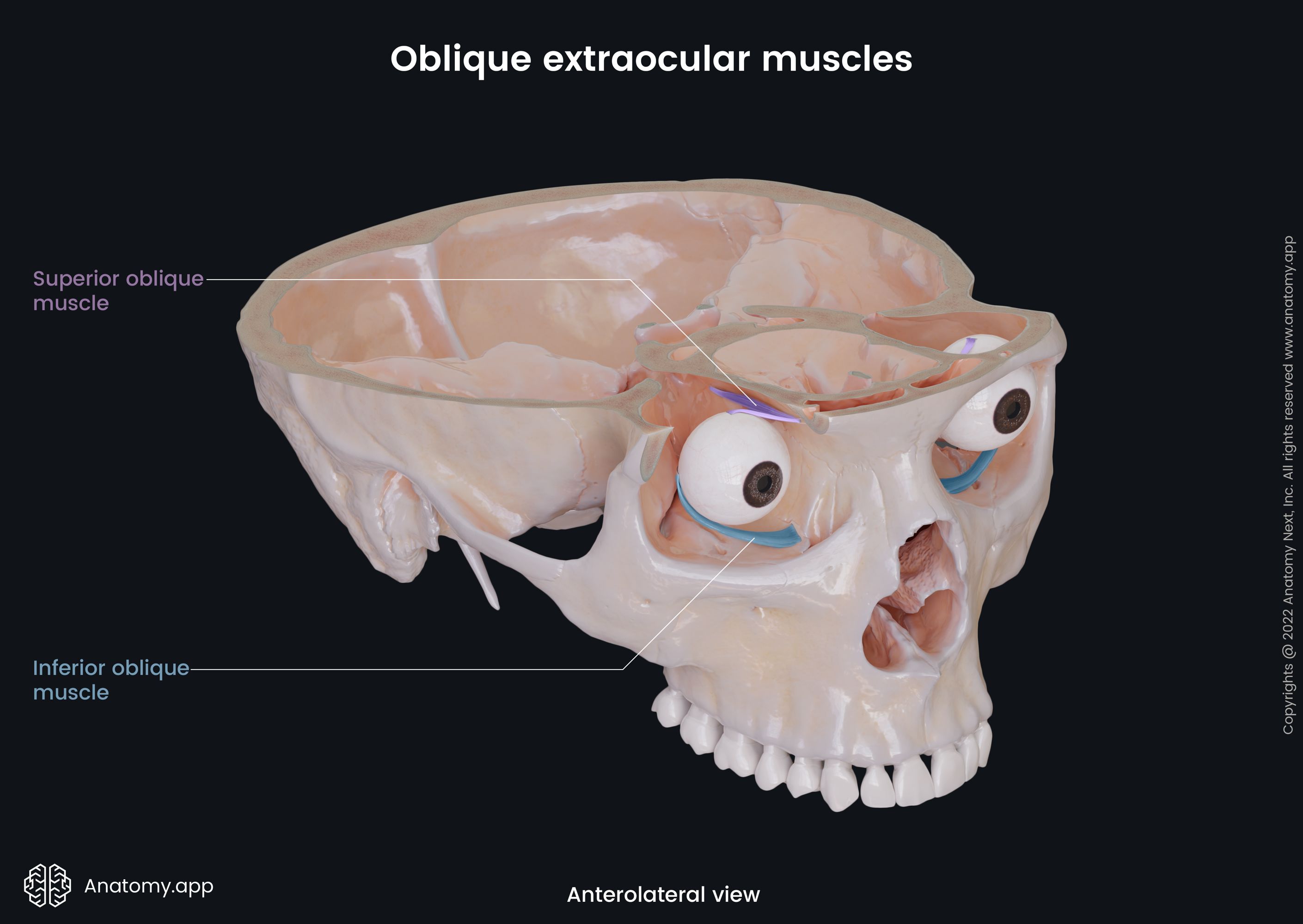- Anatomical terminology
- Skeletal system
- Joints
- Muscles
- Head muscles
- Neck muscles
- Muscles of upper limb
- Thoracic muscles
- Muscles of back
- Muscles of lower limb
- Heart
- Blood vessels
- Lymphatic system
- Nervous system
- Respiratory system
- Digestive system
- Urinary system
- Female reproductive system
- Male reproductive system
- Endocrine glands
-
Eye
- Accessory structures of eye
- Ear
Superior oblique
The superior oblique (Latin: musculus obliquus superior), also called the obliquus superior or superior oblique extraocular muscle, is one of the six extraocular muscles that are in control of eye movements. The actions of the superior oblique result in turning the visual gaze downward and outward.
Origin
The superior oblique originates from the greater wing of the sphenoid bone deep within the medial aspect of the orbit, above the medial margin of the optic canal.

Insertion
The superior oblique inserts into the posterior, superior, and lateral surfaces of the eyeball.

Action
The actions provided by the superior oblique are intorison (internal rotation), depression, and abduction of the eyeball. Thus, the actions of the superior oblique turn the eye downward and outward with medial rotation.
Innervation
The superior oblique is innervated by the trochlear nerve (CN IV).
Blood supply
The superior oblique receives arterial blood supply from the ophthalmic artery.